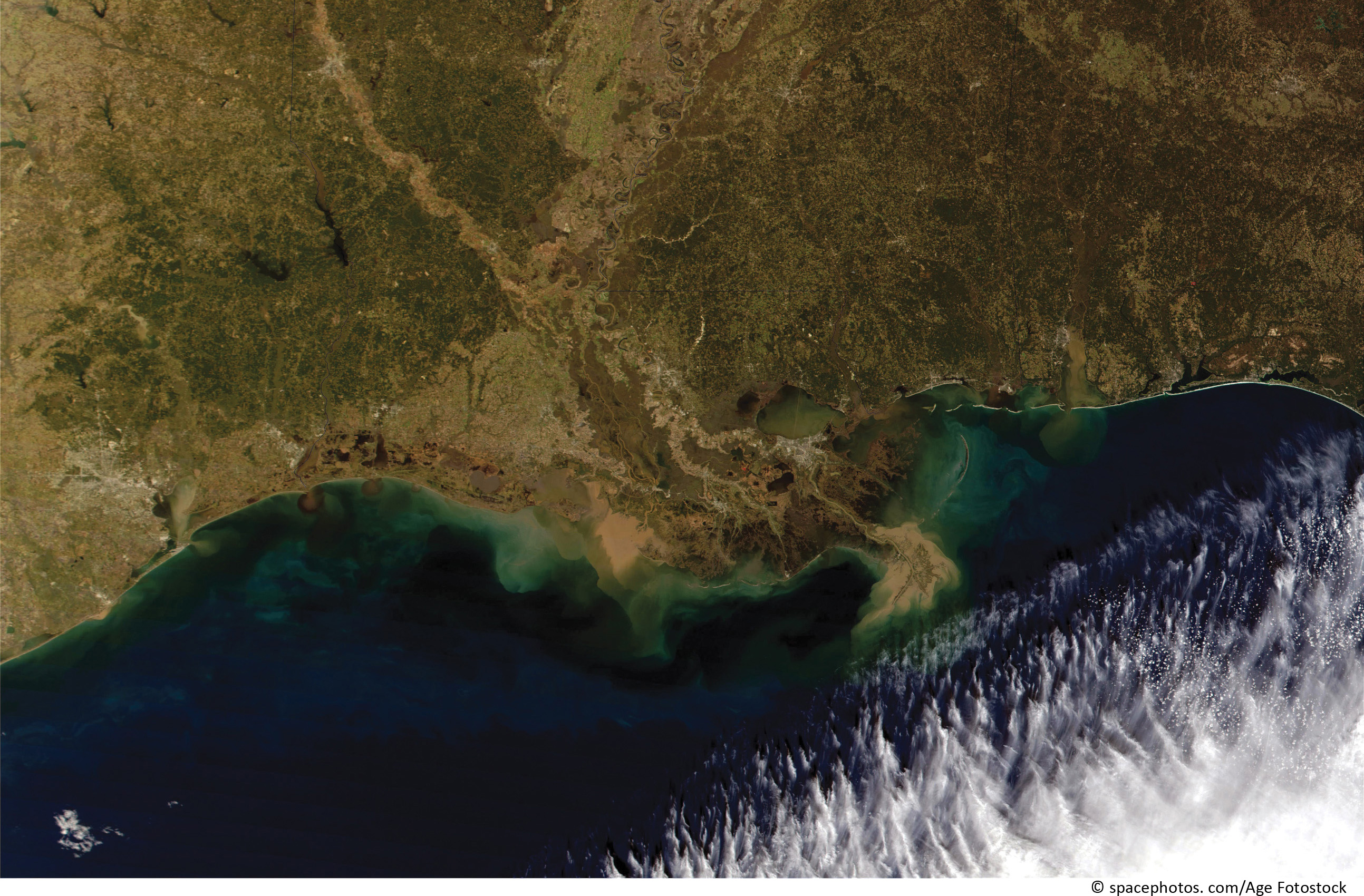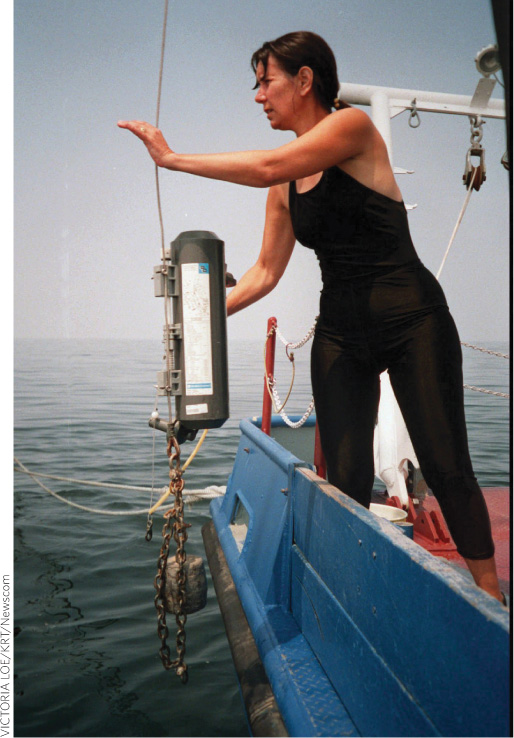Chapter Introduction
278
CHAPTER 15
WATER POLLUTION
INTO THE GULF
Researchers try to pin down what’s choking the Gulf of Mexico

CORE MESSAGE
Water pollution decreases our usable water supplies, harms wildlife and human life, and is largely caused by human actions. Some types of pollution may be easier to address than others, but in general, we can decrease water pollution by controlling what we discharge into water bodies, restoring forested areas, and limiting the use of potential pollutants.
AFTER READING THIS CHAPTER, YOU SHOULD BE ABLE TO ANSWER THE FOLLOWING GUIDING QUESTIONS
1 In general, what is water pollution? What is the difference between point source and nonpoint source pollution, and what are some common sources of each?
2 What is eutrophication? How can water pollution from fertilizer or animal waste cause eutrophication and ultimately kill aquatic life?
3 What is a watershed, and how does it affect the quality of surface water as well as the quantity of groundwater?
4 Why is nutrient pollution from agricultural sites a bigger problem today than in years past?
5 What actions can be taken to address water quality and quantity problems in the Gulf of Mexico watershed and in other areas?
280
Back in 1974, when he had just begun his career at Louisiana State University, biologist Eugene Turner took a 15-foot skiff out along the Gulf Coast to survey the water. He brought a handheld oxygen meter along with him. Other researchers had measured oxygen levels in the same waters and come up with some disturbingly low numbers—levels low enough to essentially “suffocate” any aquatic organism that couldn’t relocate to more oxygen-rich waters. But none of them had followed up, and Turner was curious. Were those earlier measurements wrong? Flukes? And if they weren’t, what did it mean for the Gulf’s ecosystem?

Sure enough, Turner’s own readings came up low as well—much lower than expected. His curiosity deepened: What would cause low oxygen levels in these waters? He suspected the myriad oil rigs in nearby waters might have something to do with it. But due to the complicated nature of water pollution, he also knew that the true culprit could be hiding hundreds, or even thousands, of miles away.